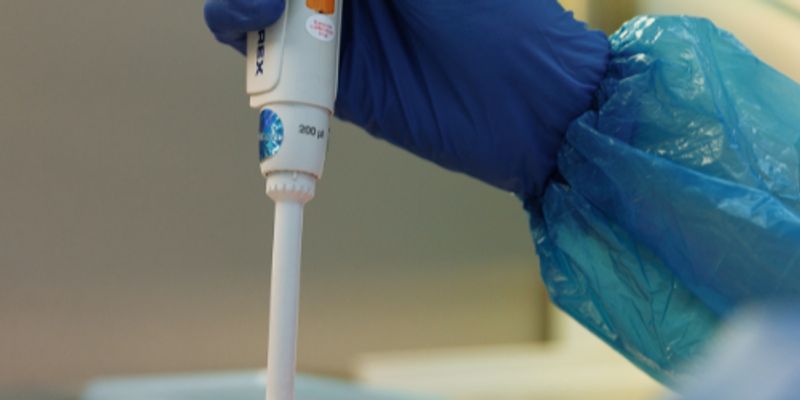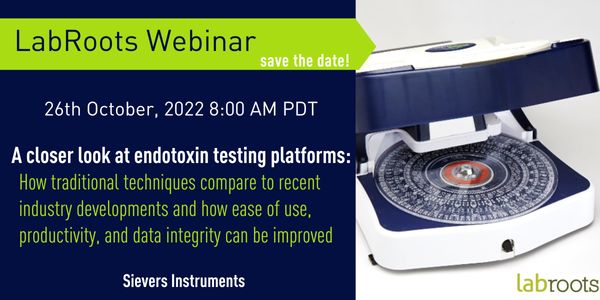96-Well Plates
96-well plates are a product used for a variety of laboratory techniques. They are made of a versatile plastic material that allows cells to grow in each well. Several features of 96-well plates, including the color, shape of the bottom of the well, and sterility, can be modified depending on the assay for which they will be used.
-
JAN 23, 2024 | 10:00 AMOrganoid technologies are increasingly being used as in vitro models of human development and disease because they exhibit morphogenetic, structural and functional properties that recapitula...Speaker: Kalpana BarnesNOV 29, 2023 | 10:00 AMHigh content screening at speed requires compromise: sacrificing resolution, sample coverage or both. This has limited high content screening’s utility as a high throughput tool. In or...OCT 26, 2022 | 8:00 AMDate: October 26, 2022 Time: 8:00am (PDT), 11:00am (EDT), 5:00pm (CEST) In this webinar, attendees will be provided an overview of the technologies that currently exist for bacterial endotox...SEP 14, 2022 | 10:00 AMDate: September 14, 2022 Time: 10:00am (PDT), 1:00pm (EDT), 7:00pm (CEST) Virus-like particles (VLPs) are nanostructures that possess diverse applications in therapeutics, immunization, and...Speaker: John Tigges , James McCracken , Cecilia CavazzoniSponsored By: Beckman Coulter Life SciencesJUL 28, 2022 | 9:00 AMDate: July 28, 2022 Time: 9:00am (PDT), 12:00pm (EDT), 6:00pm (CEST) The quality of water for pharmaceutical production (purified water, water for injection, and ultrapure water) is quantifi...MAR 05, 2019 | 9:00 AMDATE: March 5, 2019TIME: 09:00am PST, 12:00pm EST MicroRNA(miRNA) are short non-coding single stranded RNA molecules that regulate gene expression at the post tran...Speaker: Emily Zeringer , Harita Veereshlingam, PhDSponsored By: Thermo Fisher Scientific - Applied BiosystemsNOV 01, 2018 | 12:00 AMIntegrated protocols and live-cell analysis solutions for different 3D tumor modelsIn the search for greater clinical translation, cancer researchers are increasingly turning to more comp...JUN 26, 2018 | 8:00 AMOur Imaging and Cytometry Core Lab is in the Bioscience Technology Facility that serves a multidisciplinary Department of Biology as well as external users through our open access approach.&n...The detection of circulating molecular biomarkers is useful for monitoring pathogenic processes and response to therapeutic intervention1,2. In cancer, genomic and proteomic biomarkers are us...Speaker: Daniel Pregibon, PhD
The detection of circulating molecular biomarkers is useful for monitoring pathogenic processes and response to therapeutic intervention1,2. In cancer, genomic and proteomic biomarkers are us...
Speaker:
Daniel Pregibon, PhD
The emergence of technology for development of induced pluripotent stem cells (iPSCs) from somatic cells, such as skin and blood cells, has resulted in the ability of researchers to have limi...
DATE: January 26, 2017TIME: 8:00am PT, 11:00am ETThe demand for low-cost, disposable devices with short response times capable of performing routine electrochemical biosensing has...
Date: October 11th, 2016Time: 10:00AM EST, 4:00PM CEST, 3:00PM BST, 7:00AM PSTPlate readers first became available about 30 years ago and have become the workhorses of researc...
DATE: March 10, 2016
TIME: 8:00am Pacific time, 11:00am Eastern time
SCIEX has recently introduced an easy-to-use magnetic bead based sample preparation workflow, enabling the prepa...
APR 17, 2014 | 11:00 AM
Formalin Fixation and Paraffin Embedding (FFPE) of tissue samples is a routine practice by pathologists; the technique enables high quality preservation of structural information. However, ...
JAN 23, 2024 | 10:00 AM
Organoid technologies are increasingly being used as in vitro models of human development and disease because they exhibit morphogenetic, structural and functional properties that recapitula...
Speaker:
Kalpana Barnes
NOV 29, 2023 | 10:00 AM
High content screening at speed requires compromise: sacrificing resolution, sample coverage or both. This has limited high content screening’s utility as a high throughput tool. In or...
OCT 26, 2022 | 8:00 AM
Date: October 26, 2022 Time: 8:00am (PDT), 11:00am (EDT), 5:00pm (CEST) In this webinar, attendees will be provided an overview of the technologies that currently exist for bacterial endotox...
SEP 14, 2022 | 10:00 AM
Date: September 14, 2022 Time: 10:00am (PDT), 1:00pm (EDT), 7:00pm (CEST) Virus-like particles (VLPs) are nanostructures that possess diverse applications in therapeutics, immunization, and...
Speaker:
John Tigges
, James McCracken
, Cecilia Cavazzoni
Sponsored By: Beckman Coulter Life Sciences
JUL 28, 2022 | 9:00 AM
Date: July 28, 2022 Time: 9:00am (PDT), 12:00pm (EDT), 6:00pm (CEST) The quality of water for pharmaceutical production (purified water, water for injection, and ultrapure water) is quantifi...
MAR 05, 2019 | 9:00 AM
DATE: March 5, 2019TIME: 09:00am PST, 12:00pm EST MicroRNA(miRNA) are short non-coding single stranded RNA molecules that regulate gene expression at the post tran...
Speaker:
Emily Zeringer
, Harita Veereshlingam, PhD
Sponsored By: Thermo Fisher Scientific - Applied Biosystems
NOV 01, 2018 | 12:00 AM
Integrated protocols and live-cell analysis solutions for different 3D tumor modelsIn the search for greater clinical translation, cancer researchers are increasingly turning to more comp...
JUN 26, 2018 | 8:00 AM
Our Imaging and Cytometry Core Lab is in the Bioscience Technology Facility that serves a multidisciplinary Department of Biology as well as external users through our open access approach.&n...
The detection of circulating molecular biomarkers is useful for monitoring pathogenic processes and response to therapeutic intervention1,2. In cancer, genomic and proteomic biomarkers are us...
Speaker:
Daniel Pregibon, PhD
The detection of circulating molecular biomarkers is useful for monitoring pathogenic processes and response to therapeutic intervention1,2. In cancer, genomic and proteomic biomarkers are us...
Speaker:
Daniel Pregibon, PhD
The emergence of technology for development of induced pluripotent stem cells (iPSCs) from somatic cells, such as skin and blood cells, has resulted in the ability of researchers to have limi...
DATE: January 26, 2017TIME: 8:00am PT, 11:00am ETThe demand for low-cost, disposable devices with short response times capable of performing routine electrochemical biosensing has...















